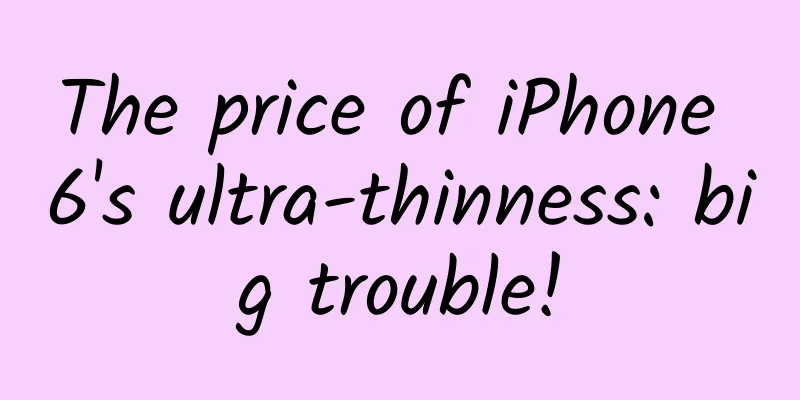Why are the red, green and funds on the health code reversed?

|
Recently, everyone must be paying close attention to the colors red and green, especially green, which they have a love-hate relationship with. They hope that their health code will be green and never red; they also hope that their stock funds will be red and never green. Why do red and green have opposite meanings? Why is it that in China, red is up and green is down, while in the United States, green is up and red is down? It may be hard for you to imagine that this is actually related to the Yin-Yang and Five Elements of my country... Traffic lights: It has nothing to do with girls’ clothes When it comes to the symbolic meaning of red and green, most people will think of traffic lights first - red light means stop, green light means go, red means prohibited, and green means unobstructed traffic. The meaning of these two colors has almost been written into our subconscious mind, so that when the health code appeared, countries naturally copied this set of colors. (Copyrighted stock image, no permission to reprint) However, if you think about it more carefully, you will find that "red means prohibited" seems to be a bit wrong: all countries basically associate red with warm celebrations. Whether it is Chinese New Year, Christmas, or India's Holi, isn't red indispensable? Holi Festival in India Image source: Xinhuanet After all, biologists have long discovered that the human eye is very sensitive to the color red, which may have evolved from our ancient ancestors' desire to find flowers and fruits - flowers and fruits obviously do not make people think of "forbidden", after all, who would hate red flowers and red fruits? As for the saying that "red represents blood, so creatures are naturally sensitive", it seems difficult to justify it - cats, dogs and most carnivores often deal with blood, but cannot distinguish red. There is also a saying on the Internet that traffic lights originated in Britain in the 19th century, and were inspired by the fact that British girls wore green and married women wore red at that time. The origin time and place of the traffic light in this statement are correct, but the statement about the color of the clothes is pure nonsense - in fact, in Europe at that time, both men and women liked to wear green, because green dye was expensive and green clothes were a symbol of wealth. However, in China, for a long time, people believed that red was more noble and positive than green. I cannot finish discussing this here, so we will discuss it in the next article. Colors from railway signal flags So how did the red and green colors of traffic lights come from? In fact, the earliest traffic lights came from railway signal lights, and railway signal lights came from railway signal flags. Signal flags, regardless of country or era, are generally red flags, because the human eye is sensitive to red. Red light has the longest wavelength, is not easily scattered, and has greater penetrating power, so it is the easiest to identify at a distance. Railway switchman waving railway signal flag Image source: Xinhuanet In the mid-19th century, Britain, the birthplace of the Industrial Revolution, was the first country to have a complete railway system. Naturally, it chose red flags to indicate that the railway was closed. Later, this signal flag evolved into a mechanical signal board, which was also painted in a striking red color. When there is no fault, the signal board is retracted; when the traffic is prohibited, the signal board is extended and horizontally placed above the railway. However, no matter whether it is a red flag or a red board, it is hard to see at night, so a red light was added. At that time, the so-called red light was a white light with a red lampshade, so the addition of a red light naturally also included a white light. Later, a green lampshade was added to indicate "proceed with caution." The three-color traffic light we are familiar with appeared in Detroit, the "Motor City" of the United States in 1920. This time, the green light was finally defined as normal traffic, and the yellow light was added to indicate careful traffic. At the same time, the United States, like Europe, also had a variety of traffic lights with different colors. After years of competition, the three-color light finally stood out and became the universal traffic paradigm in the United States. After World War II, it became the universal traffic paradigm in the world with the influence of the United States. Since then, red has been strengthened as a symbol of "prohibition", while green has the meaning of "unimpeded traffic". K-line: Actually you should call me turning line After talking about traffic lights for so long, we can finally return to stock funds. Nowadays, even those who do not invest in financial management know that various financial products will use K-line charts to indicate market trends, and use colors to distinguish between rises and falls. You look at the curve, how smoothly it falls (Copyrighted stock image, no permission to reprint) Have you ever wondered why K-line is called K-line? In fact, K-line comes from the Japanese word "罫线", and "罫" means the squares on the chessboard. "罫" is pronounced as kei in Japanese, which is transliterated as K. This translation is hard to describe. The word 罫 should be pronounced as "拐" in Mandarin. To be honest, it is better to translate it as "拐线", which is at least more vivid. The history of K-line chart in Japan is quite old, dating back to the 18th century. It was first used to indicate the rise and fall of rice prices. The rising part was called "yang line" and the falling part was called "yin line". According to the traditional Yin-Yang and Five Elements theory originated in China, fire is the sun, corresponding to red, and water is the moon, corresponding to black (or dark blue). Therefore, in the original Japanese candlestick chart, the Yang line indicating an increase is red, and the Yin line indicating a decrease is black. After stocks were introduced to Japan, K-line charts were also used by the Japanese to analyze the stock market, but they did not spread in Europe and the United States. It was not until the 1990s, the golden period of Japan's economic boom, that K-line charts, which were regarded as "Eastern wisdom", quickly became popular in European and American stock markets. For Europeans and Americans, the K-line, which was popularized in the 1990s, is undoubtedly a new thing compared to the traffic lights that appeared in the 19th century. They naturally used the red and green colors in the traffic lights, which is why the U.S. stock market has the "green rise, red fall" phenomenon. However, as the birthplace of the K-line chart, Japan cannot tolerate the fact that the "Yanxian" is green. Therefore, the Japanese stock market still retains the tradition of "red rise", but changes the "black fall" to "green fall" to show international standards. The same is true of Taiwan, which has also continued the East Asian tradition of red rising and green falling. When stocks were first introduced to the mainland, people generally knew nothing about them. Taiwanese businessmen took advantage of this market gap and developed a large number of stock tools specifically for mainland novices, thus bringing the habit of red rising and green falling to the mainland. It is also worth mentioning that the Korean stock market, although red also represents an increase, the Yin line is not green but blue - just look at the Korean flag and you will know that their understanding of Yin and Yang is red Yang and blue Yin. So, it is not just China that uses red to indicate an increase. Except for Hong Kong, the whole of East Asia uses red to indicate an increase. That’s all for today. Now you know why everyone wants the health code to be green, but the fund should not be green. After reading this article, look at the fund again, and you will be motivated to work hard again. Source: Museum Written by | Yizhi WeChat Editor | Ah She Shuang |
<<: What is the hottest healthy food in 2021? You must be eating it every day!
>>: What would happen to humans if animals started to rebel against them?
Recommend
What are the charges for 400 calls?
How to apply for a 400 number. There are two opti...
Android app size reduced from 18MB to 12.5MB
Opening words A while ago, my boss gave me a task...
In the competition for special drugs for COVID-19, which “players” stand out?
The new coronavirus pandemic is not over yet. In ...
A complete analysis of the revenue sharing of 17 short video channels including Toutiao and Meipai
1. Information Client Channel 1. Toutiao As a lon...
After analyzing 1,000 Xiaohongshu notes, I finally figured out the secret to increasing followers
Are men richer or women richer? This is a very no...
WeChat JS-SDK Revealed: How many minutes does it take for a WebApp to transform into a “native App”?
On January 10, WeChat public platform opened the ...
Cao Maogui's stock market secrets: intraday T+0 operation methods and skills 1 video
Cao Maogui's stock market secrets: intraday T...
How to increase the volume of Baidu bidding account promotion?
Just now, friends in the group were discussing th...
This most common cooking oil promotes cancer cell metastasis and increases the risk of spread
When you eat biscuits, instant noodles, or fried ...
How to apply the 80/20 rule in designing self-propagation and new sharing activities?
If you want to enhance the self-propagation abili...
Can eating more duck eggs lower blood pressure? The truth is...
Rumor: "People with high blood pressure shou...
Ex situ conservation protects our elk from getting lost
Produced by: Science Popularization China Produce...
Microsoft internal documents reveal Lumia 950 configuration
According to foreign media reports, well-known wh...
Health Science | Rubbing your eyes is so harmful?! Stop it!
(Statement: This article is from Hubei Tiantian P...
Nanjing takeaway private studio, I don't want to leave after coming here
Nanjing tea delivery private studio arrangement: ...









